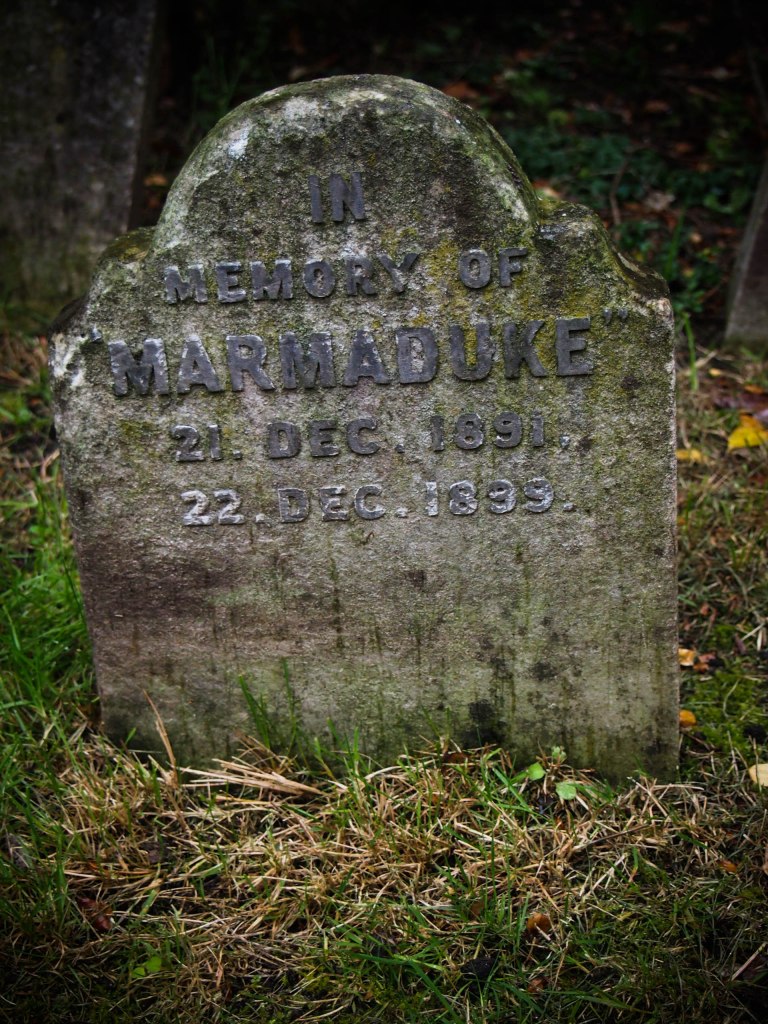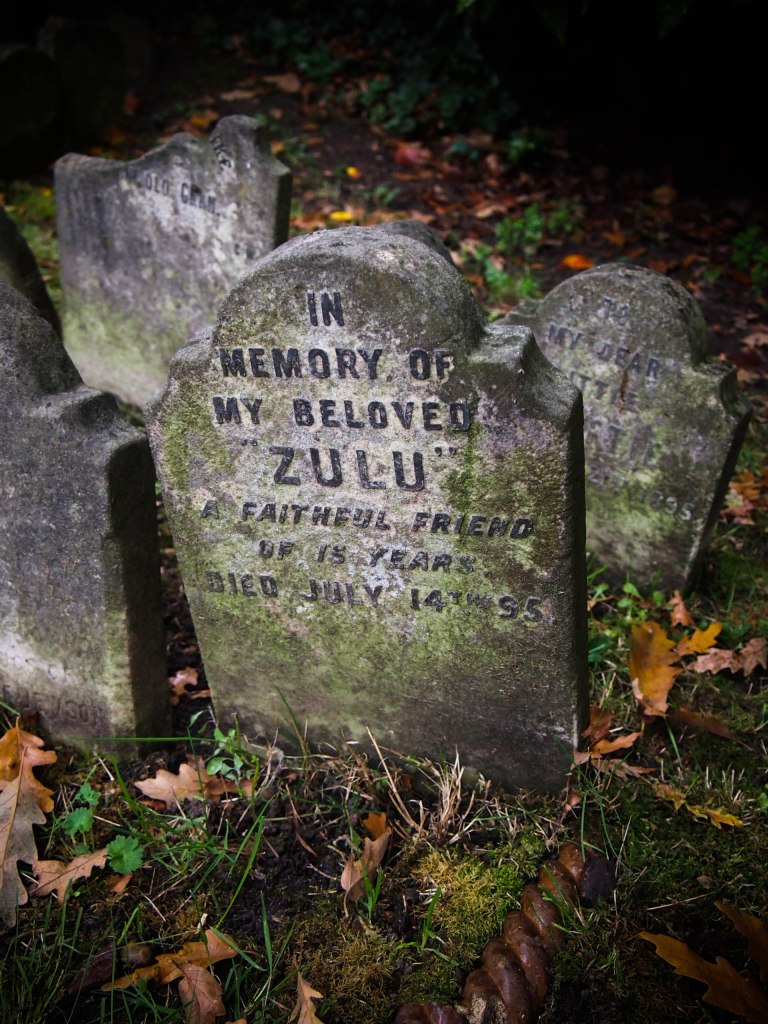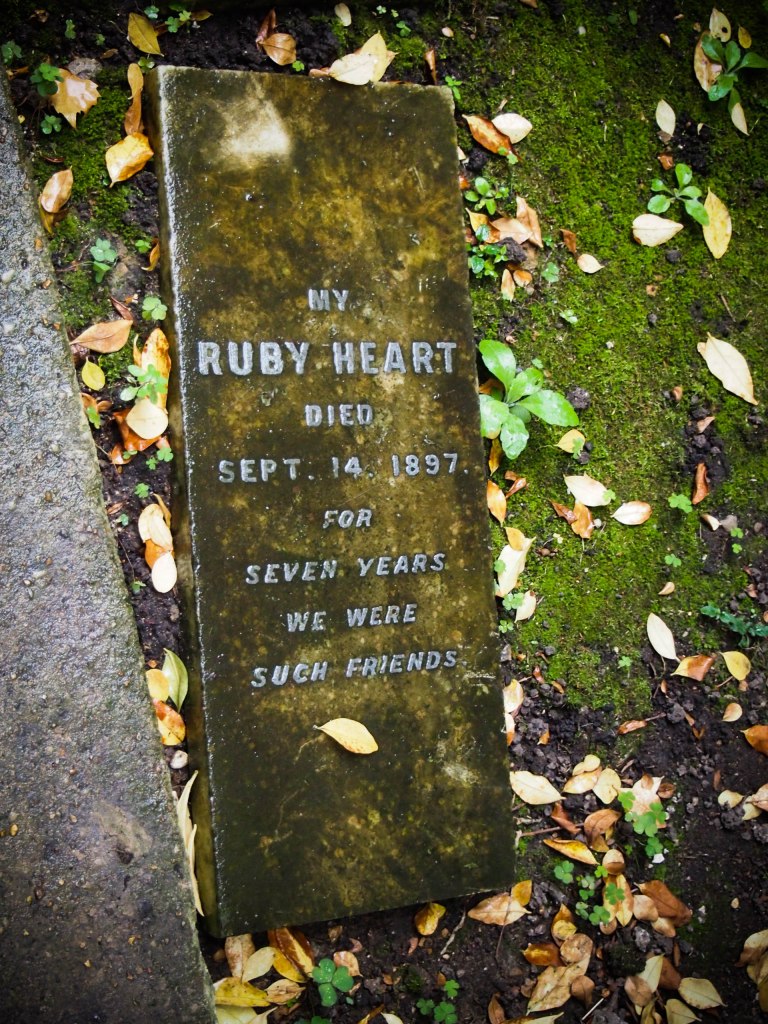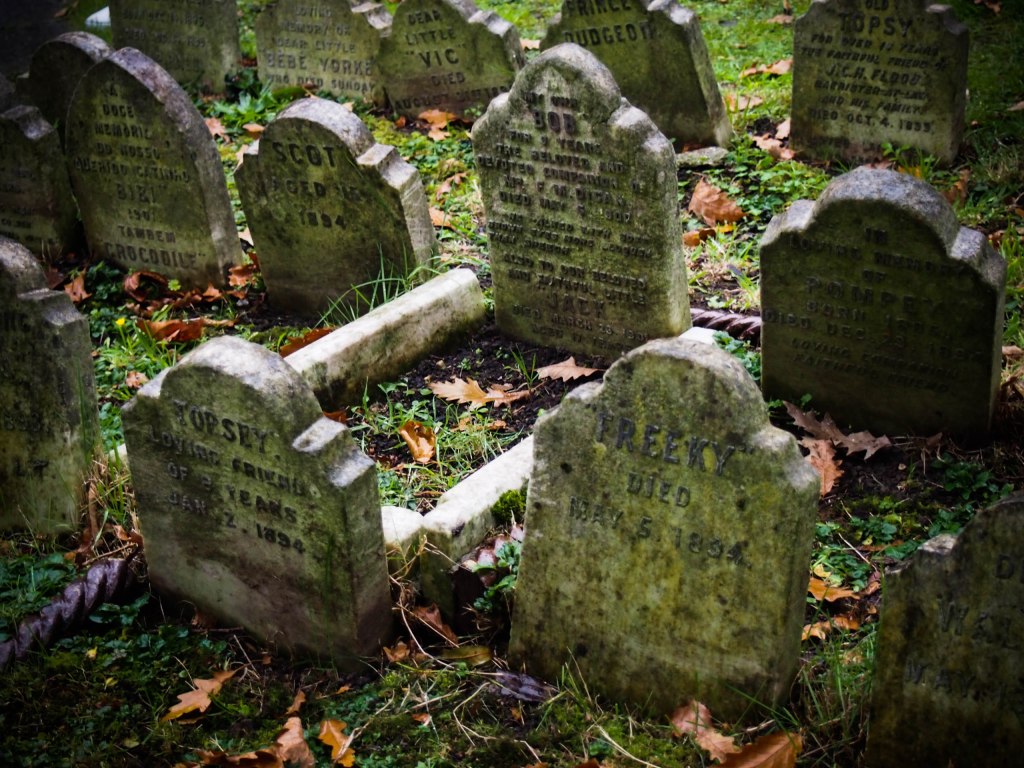by Caroline
If you peek through the railings near one of Hyde Park’s entrance lodges, you’ll see something quite unexpected – a little cemetery in the lodge’s back garden. The space is filled with rows of tiny gravestones. This is one of Hyde Park’s little-known secrets – a pet cemetery dating from the late Victorian period.
 Hidden behind railings, the gatekeeper’s lodge and thick walls of trees and bushes, not many people have heard of the pet cemetery, and it is rarely open to the public. However, I was lucky enough to visit this strange little place as part of a guided walk organised for the London Month of the Dead.
Hidden behind railings, the gatekeeper’s lodge and thick walls of trees and bushes, not many people have heard of the pet cemetery, and it is rarely open to the public. However, I was lucky enough to visit this strange little place as part of a guided walk organised for the London Month of the Dead.


The garden of the gatekeeper’s lodge by the park’s Victoria Gate became a pet cemetery quite by accident. In 1881, a pet dog – Cherry – belonging to the Lewis Barned family died of old age. The Lewis Barneds, who had two young children, were friendly with Mr Winbridge, the gatekeeper who lived at the Victoria Gate lodge, and they asked him if their dog could be buried in the lodge’s garden. The gatekeeper agreed, a grave was dug, and a little headstone was erected to “Poor Cherry”.
This might have ended up being a one-off burial, but a year later another dog, named Prince, was hit by a carriage close to the gatekeeper’s lodge and died of its injuries after being taken into the gatekeeper’s home. This dog belonged to Louisa, wife of the Duke of Cambridge. Perhaps this royal connection helped: word got around, and within a few years the little garden was full of small headstones commemorating London’s departed pets. By 1903, over 300 animals had been laid to rest there, many of them – like Prince – unfortunate victims of accidents involving carriages and carts.


Many of the people living in the local area would not have had their own garden – Bayswater, the district immediately to the north of Hyde Park, is populated with townhouses and mansion blocks. The gatekeeper, Mr Winbridge, arranged for the graves to be laid out in neat rows, and even conducted burials of animals himself if the owners were too distraught to do it themselves. Most of the headstones are of an identical size and shape; perhaps an arrangement was made with a local stonemason to produce them.

Although burial grounds specifically used for animals have a long history, going back thousands of years, it was in the last years of the 19th Century that recognisably modern pet cemeteries opened for the first time. The pet cemetery at Hartsdale, New York, had a beginning similar to the cemetery at Hyde Park. In 1896, a local vet allowed the burial of a dog in his orchard as a favour to its grieving owner – the site went on to grow and grow as a pet cemetery and it is still operating today. On the other hand, the Cimetière des Chiens et Autres Animaux Domestiques to the north of Paris was set up in 1899 as an exclusive burial ground for the deceased pets of society’s elite – it has a beautiful Art Nouveau entrance and one of its most famous interments is the Hollywood canine star Rin Tin Tin.
The headstones at the Hyde Park cemetery tell us the names of some of the beloved pets of Victorian and Edwardian Londoners, ranging from pet names that are still popular today, all the way to the downright odd. Sometimes we also learn the names of the grieving owners.






Officially, the burial ground closed in about 1903. Perhaps Mr Winbridge retired or moved away. However, as the dates on some of the graves demonstrate, intermittent burials took place in the cemetery until about the Second World War. The cat Ginger Blyth, whose grave is pictured below, was buried in 1946 after he died aged 24 – quite an impressive innings for a cat!

One grave is especially tragic – the headstones states that Balu was “poisoned by a cruel Swiss” in Berne in 1899. The grave of this unfortunate murder victim attracted a lot of attention from the visitors to the graveyard when I was there; we were all wondering what on earth happened to poor Balu and why he was poisoned.

A pet cemetery is the sort of place that will inevitably divide opinion – some will find it touching, while others will find it mawkish and over the top. But it’s clear from the sentiments on many of the gravestones that the owners of the animals buried at Hyde Park saw their pets as companions and even family members.

The pet cemetery is not usually open to the public. However, the guided walks that took place as part of the London Month of the Dead in 2015 proved to be very popular, so hopefully there will be other opportunities to visit this unique little burial ground in the future.




3 responses to “Exploring Hyde Park’s Hidden Pet Cemetery”
[…] 1. Exploring Hyde Park’s Hidden Pet Cemetery […]
[…] a human member of the family. Garden-less Londoners could lay their beloved animals to rest in Hyde Park’s pet cemetery or Ilford Animal Cemetery. In the gardens of Marlborough House (now home to the Commonwealth […]
Would absolutely adore to visit this little cemetery. Wonderful photographs